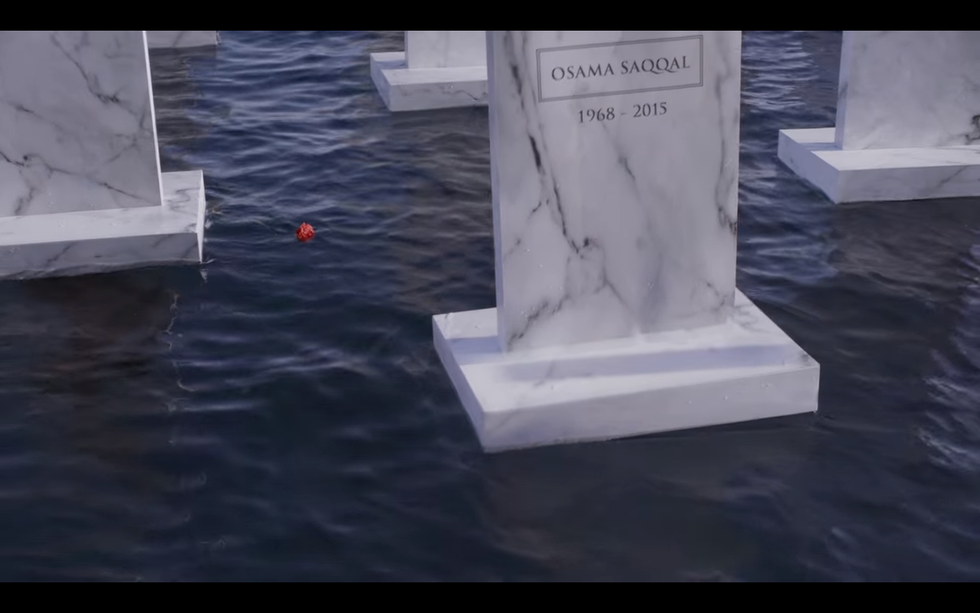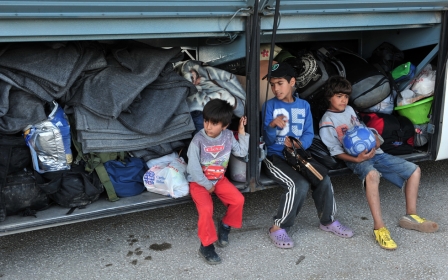Sea cemetery memorialises thousands of Syrians drowned in Mediterranean

A floating sea cemetery has been built in the Mediterranean to commemorate thousands of people who have lost their lives trying to reach Europe.
The project focuses on over 4,000 Syrians who are known to have drowned in choppy seas between Turkey and Greece since their country began to be torn apart by war in 2011.
A video of the Sea Cemetery project shows dozens of floating white tombstones in seas just off the Turkish coast, where many boat disasters have taken place in recent years.
Each tombstone bears the name, date of birth and death of one person who did not survive the crossing.
The video features the testimony of some who lost relatives to what they call “the cemetery for Syrians”.
One man, Khaled al-Khamis, said: “I used to dream of watching the sea. I hate it now.
“I wish I had died under the bombs in Syria so that I wouldn't have to face all of these deaths.”
The Sea Cemetery is an initiative by Support to Life, a Turkish NGO that has been delivering aid including food, stoves and housing to some of the almost three million Syrians now living in Turkey.
On the project's website, each tombstone links to snippets of media coverage of the Mediterranean migration crisis, including footage of a coastguard destroying a rubber dinghy packed with people and a picture of Alan Kurdi, the toddler whose drowning sparked international outrage in September 2015.
In addition to Syrians, thousands of people of other nationalities are known to have drowned in the Mediterranean.
Despite efforts to cut the numbers of people attempting the crossing, including by deploying NATO ships which started last September, over 1,300 people have drowned in the Mediterranean since the operation began, according to figures collated by the International Organisation for Migration (IOM).
According to the IOM, at least 8,420 people have been killed or gone missing in the Mediterranean since 2014, making it by far the most dangerous migration route in the world.
Middle East Eye propose une couverture et une analyse indépendantes et incomparables du Moyen-Orient, de l’Afrique du Nord et d’autres régions du monde. Pour en savoir plus sur la reprise de ce contenu et les frais qui s’appliquent, veuillez remplir ce formulaire [en anglais]. Pour en savoir plus sur MEE, cliquez ici [en anglais].




